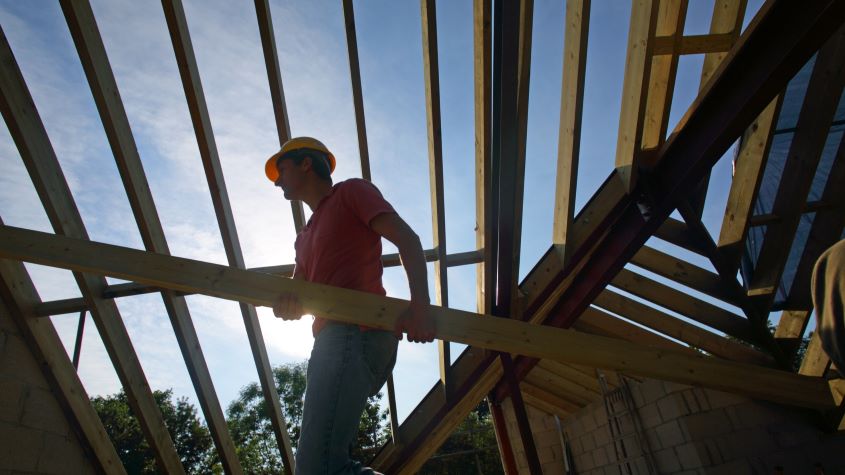Are housebuilder stocks looking cheap for dividend yields?
Housebuilders look like cheap dividend stocks, but can investors trust them to deliver? We look at Taylor Wimpey, Persimmon and Barratt Developments.


At first glance, UK housebuilders Persimmon, Taylor Wimpey and Barratt Developments may appear to be some of the best dividend stocks around. They offer high historic dividend yields that, aside from a period of uncertainty prompted by the pandemic, have been relatively robust over recent years.
However, with their financial prospects widely expected to come under pressure in the year ahead due to the impact of rising interest rates on housing affordability, their dividend payouts may decline. We consider whether these housebuilder stocks can deliver on dividend yields?
You can also read about the highest dividend yields in the FTSE 100 in our article.
MoneyWeek
Subscribe to MoneyWeek today and get your first six magazine issues absolutely FREE

Sign up to Money Morning
Don't miss the latest investment and personal finances news, market analysis, plus money-saving tips with our free twice-daily newsletter
Don't miss the latest investment and personal finances news, market analysis, plus money-saving tips with our free twice-daily newsletter
The qualities to look for in dividend stocks
The high historic yields and a solid track record of dividend payouts are only two criteria that investors should seek when purchasing income stocks.
The affordability of dividend payments, assessed through the dividend coverage ratio, is also crucial because it provides guidance on the sustainability of shareholder payouts. For example, a housebuilder with dividend cover of two, which means dividends could be paid twice using net profits, is likely to be a far more attractive income investing proposition than a rival which can only afford to pay them once using net profits. The latter’s dividends are more likely to fall should net profits come under pressure, for instance.
The volatility of a company’s earnings is also important to consider when assessing dividend stocks. A cyclical business that is highly dependent on the performance of the wider economy is likely to offer less stable dividend payouts than a firm with defensive characteristics. Since housebuilders are cyclical firms, their profits are likely to fluctuate depending on the economic outlook. Indeed, with the UK widely expected to experience a recession this year as interest rates rise, their earnings and dividend prospects have moved sharply into focus.
Can investors trust Persimmon’s dividend?
Persimmon announced major changes to its dividend policy in November in response to tougher trading conditions. Having successfully implemented a capital return programme between 2013 and 2022 that paid a total of 1535p per share in dividends, the firm will now follow a capital allocation policy that prioritises its financial position during a challenging period for the housebuilding sector.
For example, ordinary dividends will be set at a level that means they are well covered by net profits. This will enable the company to reinvest for future growth, notably through the acquisition of land at potentially lower prices during a period of falling asset prices. Any excess capital generated during a period of economic recovery will be returned to shareholders in the form of special dividends or a share buyback.
While Persimmon’s revised payout policy represents a major change that may erode investor trust in its income prospects, it does not necessarily make the company a less attractive dividend stock. Rather, it means the firm is realistic about the fact that its operating conditions have deteriorated over recent months and its previous dividend policy has therefore become unaffordable.
Its short-term dividend payouts are likely to be lower than those of the recent past on a per share basis. However, over the long run, its new policy is likely to aid the firm’s financial prospects and boost its capacity to raise shareholder payouts as the economy recovers. Further details on its dividend policy are set to be included in full-year results scheduled for release on 1 March.
What is Taylor Wimpey’s sustainable dividend yield?
Taylor Wimpey has also proved to be a relatively attractive dividend stock over recent years. Its dividend policy comprises a payout that is made throughout all market conditions, which provides a degree of stability for income-seeking investors. In addition, the firm aims to pay surplus cash to shareholders as and when buoyant trading conditions provide a boost to its bottom line.
Overall, the firm aims to pay twice-yearly dividends that together amount to around 7.5% of its net assets. While generous, given that 7.5% of its net asset value per share currently equates to a dividend yield of 7.4%, ultimately market conditions will determine whether the company’s present dividend policy is sustainable.
Indeed, dividends are funded by net profits. If a housebuilder, or any other firm, experiences a decline in profitability, its dividends will either need to be reduced or funded by existing cash reserves or debt. Although Taylor Wimpey has a net cash position of £864m, and could subsidise a profit shortfall to maintain dividends, its profitability will determine the level of dividend that is sustainable in the long run.
With the firm’s earnings per share forecast to fall to 10.3p next year, last year’s dividend of 8.28p per share is set to remain affordable. However, with an uncertain operating environment ahead, it would be unsurprising for dividend payments to be moderated to a level that is more sustainable. Further details on its dividend policy are expected to be included in full-year results scheduled for release on 2 March.
Will Barratt Developments meet analyst dividend forecasts?
Barratt Developments is another dividend stock that has been popular among income-seeking investors. The firm altered its dividend policy at the end of the 2022 financial year so that, while shareholder payouts were covered 2.25 times by net profits last year, they will be covered twice by net profits this year. It then plans to reduce dividend cover to 1.75 times in 2024.
While this would normally mean greater dividends, a tough operating environment that is forecast to prompt lower earnings means that dividends per share are set to decline. It is forecast to pay a dividend of 33.6p per share in the 2023 financial year, followed by dividends of 24.1p per share in the 2024 financial year. As a result, it trades on a forward yield of 5.2%.
Although the company has a degree of headroom when making dividend payments, an ongoing downturn for the housing market means its near-term financial future is highly uncertain. Investors, therefore, may need to accept that there is an elevated chance of the firm failing to meet current dividend forecasts as rising interest rates and falling house prices lead to a decline in its profitability.
Are these dividend stocks worth buying?
Although Persimmon, Taylor Wimpey and Barratt Developments face a tough near-term outlook, they remain attractive dividend stocks for the long run. Factors such as a longstanding imbalance between housing supply and demand, as well as a likely decline in the rate of inflation this year that moderates interest rate rises, mean the prospects for housebuilders remain upbeat over the coming years.
Unlike in recent years, though, dividends across the sector are likely to fall before they rise. This means that investors should ensure they diversify across different sectors and do not rely on a small number of housebuilders for their dividend income.
Get the latest financial news, insights and expert analysis from our award-winning MoneyWeek team, to help you understand what really matters when it comes to your finances.
Robert Stephens is a CFA charterholder with over 15 years industry experience. He has worked with a wide range of global asset managers and contributed to a variety of newspapers and magazines including The Telegraph, What Investment and Citywire. He has been a passionate investor on his own account for over 20 years and cites Warren Buffett, Ben Graham and Peter Lynch as his main influences.
-
 ‘Why I have ditched my Help to Buy ISA for cash savings and the stock market’
‘Why I have ditched my Help to Buy ISA for cash savings and the stock market’Without the 25% bonus, my Help to Buy ISA is effectively redundant, says MoneyWeek writer Sam Walker.
-
 Is your inheritance tax allowance cut if you sell to downsize or sell your home to pay for care?
Is your inheritance tax allowance cut if you sell to downsize or sell your home to pay for care?Downsizing relief is a little-known benefit that could save your loved ones tens of thousands of pounds in inheritance tax after you’ve died.
-
 Halifax: House price slump continues as prices slide for the sixth consecutive month
Halifax: House price slump continues as prices slide for the sixth consecutive monthUK house prices fell again in September as buyers returned, but the slowdown was not as fast as anticipated, latest Halifax data shows. Where are house prices falling the most?
-
 Rents hit a record high - but is the opportunity for buy-to-let investors still strong?
Rents hit a record high - but is the opportunity for buy-to-let investors still strong?UK rent prices have hit a record high with the average hitting over £1,200 a month says Rightmove. Are there still opportunities in buy-to-let?
-
 Pension savers turn to gold investments
Pension savers turn to gold investmentsInvestors are racing to buy gold to protect their pensions from a stock market correction and high inflation, experts say
-
 Where to find the best returns from student accommodation
Where to find the best returns from student accommodationStudent accommodation can be a lucrative investment if you know where to look.
-
 The world’s best bargain stocks
The world’s best bargain stocksSearching for bargain stocks with Alec Cutler of the Orbis Global Balanced Fund, who tells Andrew Van Sickle which sectors are being overlooked.
-
 Revealed: the cheapest cities to own a home in Britain
Revealed: the cheapest cities to own a home in BritainNew research reveals the cheapest cities to own a home, taking account of mortgage payments, utility bills and council tax
-
 UK recession: How to protect your portfolio
UK recession: How to protect your portfolioAs the UK recession is confirmed, we look at ways to protect your wealth.
-
 Buy-to-let returns fall 59% amid higher mortgage rates
Buy-to-let returns fall 59% amid higher mortgage ratesBuy-to-let returns are slumping as the cost of borrowing spirals.
